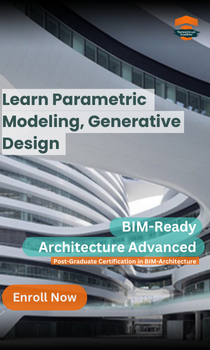Say Yes to Upskilling and No to Switching Careers
Jul 21, 2023
Category: Career Insights
Jananii

Are you someone in the AEC Industry?; Feeling stuck and don’t know what to do next in your career?; Dissatisfied with your current salary and looking for better opportunities in the market?; or Simply rethinking your entire career and planning to shift to a different industry altogether?
Well, these types of career dilemmas are very normal to occur. But sometimes, it might lead to big confusions and even, result in wrong career choices and decisions.
But, what if I say I have an answer to all the above questions running in your mind?
So, let’s not waste any more time and find a queer solution to the questions and upgrade your career choices.
There’s a saying by Peter Drucker, a renowned management consultant, educator, and author who made significant contributions to the field of management theory.(known as the “father of modern management”),
“The only skill that will be important in the 21st century is the skill of learning new skills. Everything else will become obsolete over time.”
According to a study, conducted by the global staffing firm, Robert Half found that employers increasingly value candidates who are willing to learn new skills. Also, 84% of HR managers are open to hiring people whose skills can be developed through training. Upskilling is one of the best ways to increase one’s value and has now become the top priority for the professionals, and has made an increase in percentage to 15% in priority, since June 2020. It is the path to a future-proof career and to becoming a better asset for your company.
Modern Skills for Modern Challenges:
In today’s fast-paced and technology-driven world, professionals across industries are constantly seeking ways to stay relevant and advance their careers. When faced with this challenge, the idea of switching careers often comes to mind. However, in the realm of architecture, engineering, and construction (AEC), there’s a more efficient and exciting option: upskilling with Building Information Modeling (BIM). In this blog, we will explore the compelling reasons to say “yes” to upskilling with BIM and why it outweighs the need for a complete career switch.
It has never been so important for AEC professionals to stay current—and this rings especially true for the fast-paced field of BIM & Digital Engineering. Operating right at the cutting edge of technology and human experience, designers have always been primed for a steep and continuous learning curve. Now, with the rise of the Internet of Things (IoT), Automation, augmented reality, and artificial intelligence (to name just a few), the learning curve is about to get steeper.
Meeting Client expectations:
It is pivotal to the role of architects & engineers as they address design intent, functionality, space usage, aesthetics, and other details. However, it’s equally critical for them to keep their eyes on the budget, schedule, and overall project plan.
Why spend time sketching 2D CAD when you can right away model it in Revit or SketchUp and visualize it even more realistically and design manually when you can do it in 75% less time using software tools?
Architect to BIM Coordinator:
Architects can use automation to easily create repetitive designs, build custom forms and prepare project-specific reports. With the host of benefits that BIM provides to architects, architects can truly think out of the box and cater to their client’s needs underpinning the various features of BIM.
Also, Customized scripting allows users to build powerful and bespoke programs to make design processes efficient and sustainable. Dynamo, integrated with Revit, performs calculations, builds complex shapes, and automates processes. Adopting Revit to automate Revit families for façade, families, framing or panels helps generate a fully-realized BIM model.
The BIM-sketch:
BIM models are 3D geometric encoded that have the potential to add other dimensions like schedule, cost data, facility management, etc. It enables ease in the construction supply chain which considerably reduces time spent analyzing management schedules and cost sheets. It incorporates three required capabilities essential for structural engineering i.e. geometry, material properties, and load condition for analysis. All this can be stored, edited, and retrieved from BIM. The virtual 3D Model also reduces RFI items from the contractors and manufacturers as it makes visualization of the project design possible for all stakeholders.
BIM for Engineers:
Engineers can also use BIM for manufacturing purposes. BIM Structural Services has allowed for increased use of prefabrication and modular construction. Ideally in a prefabrication components are created offsite and assembled on location. Any errors can lead to waste and hours of rework. Engineers can work in a controlled environment with speed and precision.
Ready Now?
Technology continues to rapidly change the way most organizations operate. In response, companies and their employees must consistently add to their technical knowledge and skill sets. As job requirements change and new skills are required, companies are forced to either find new talent or fill the gap through upskilling.
It’s in the hands of young architects & engineers to drive change and innovation in the AEC industry. Become the specialist who bags jobs and earns more than the generalists in the market. Be among those top 1% who understand this strategy and excel in your career with better roles & 40% higher pay than others.








